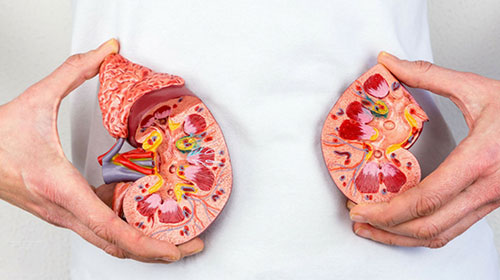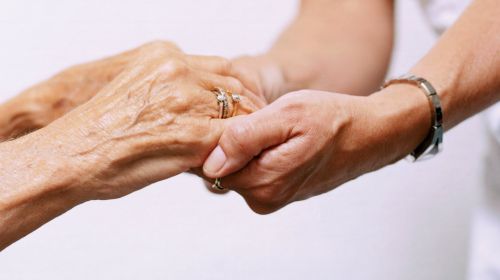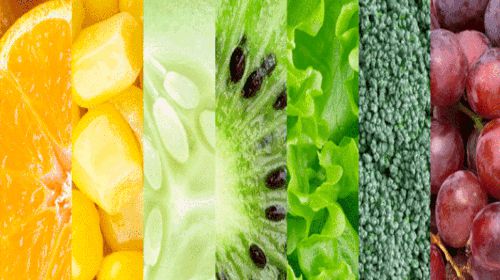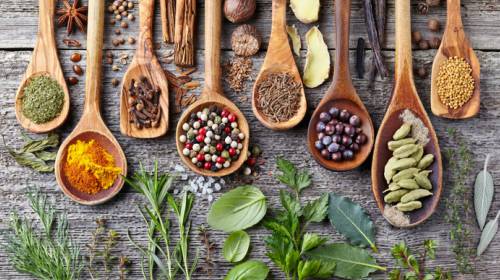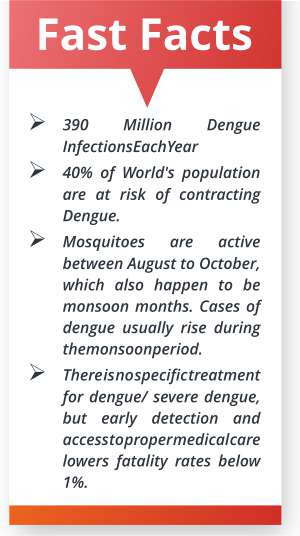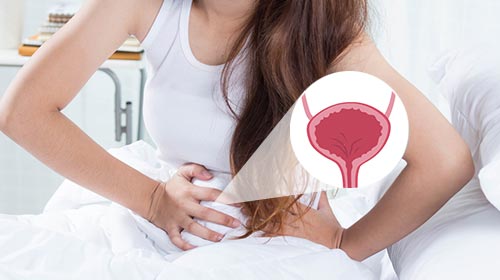Nutrition is the intake of food, considered in relation to the body’s dietary needs vital for good health and wellbeing. Food provides body energy, protein, essential fats, vitamins and minerals to live, grow and function properly. However, consumption of insufficient, excessive, or imbalanced of nutrients refers to malnutrition, which leads for causing several diseases like Obesity, diabetes mellitus, cardiovascular disease, cirrhosis, hair loss, dyspepsia, birth defects, reproductive and teratogenic effects, diarrhea causing dehydration, vomiting, constipation, anticoagulant, excessive bleeding, liver damage, haemorrhagic stroke, reduced glycaemic control among diabetics, Cancer, fatigue, depression, confusion, nausea, constipation, pancreatitis, increased urination, kidney stones, metabolic syndrome and so on and so forth.

Nutrients are of two types: macro-nutrients, which are needed in relatively large amounts, and micronutrients, which are needed in smaller quantities or in traces. The macronutrients are carbohydrates, fibres, fats, protein, and water. They provide structural material for body like amino acids, lipids and energy. The essential fatty acids are essential for maintaining good health but body does not produce them. They are the omega-3 and omega-6 fatty acids. The micronutrients are minerals, vitamins, and other phytonutrients. Dietary minerals are inorganic chemical elements required by living organisms and play a role as electrolytes to maintain the body healthy. The common micronutrients are: Calcium, a common electrolyte, needed for muscle and digestive system, bone strength, to neutralize acidity, help to clear toxins, provides signalling ions for nerve and membrane functions. Magnesium, required for processing ATP and related reactions to builds bones, increases flexibility, increases alkalinity. Phosphorus, required component of bones; essential for energy processing. Potassium, is a very common electrolyte for heart and nerve health. Sodium, a very common electrolyte for significantly improve blood pressure and heart health. However, excessive sodium, over 1500 mg per day, consumption can deplete calcium and increase blood pressure, a common risk factor for heart disease and stroke. Magnesium, is important for normal bone structure in the body and essential to the working of hundreds of enzymes. Low magnesium levels in the body have been linked to diseases such as osteoporosis, high blood pressure, clogged arteries, hereditary heart disease, diabetes, and stroke. Sulphur, for three essential amino acids and therefore many proteins (skin, hair, nails, liver, and pancreas). Sulphur is not consumed alone, but in the form of sulphur-containing amino acids. Chlorine as chloride ions; Chloride salts such as sodium chloride is an essential electrolyte located in all body fluids responsible for maintaining acid/base balance, transmitting nerve impulses and regulating fluid in and out of cells. Besides these, many elements are required in trace amounts, usually because they play a catalytic role in enzymes. Some trace mineral elements are: Cobalt, required for biosynthesis of vitamin B12 family of coenzymes. Animals cannot biosynthesize B12, and must obtain this cobalt-containing vitamin in their diet. Copper, required component of many redox enzymes, including cytochrome c oxidase. Chromium, required for sugar metabolism. Iodine, required not only for the biosynthesis of thyroxine but also for other important organs as breast, stomach, salivary glands, thymus, etc.; for this reason iodine is needed in larger quantities than others in this list, and sometimes classified with the macro minerals. Iron, required for many enzymes, and for haemoglobin and some other proteins. Manganese, required for processing of oxygen. Molybdenum, required for xanthine oxidase and related oxidases. Selenium, required for peroxidase (antioxidant proteins). Zinc, required for several enzymes such as carboxypeptidase, liver alcohol dehydrogenase, and carbonic anhydrase.
Vitamins are essential nutrients, necessary in the diet for good health. Vitamin deficiencies may result in disease conditions, including goitre, scurvy, osteoporosis, impaired immune system, disorders of cell metabolism, certain forms of cancer, symptoms of premature aging, and poor psychological health, among many others. However, excess levels of some vitamins are also dangerous to health. The thirteen vitamins required by human metabolism are: vitamin A (retinols and carotenoids), vitamin B1 (thiamine), vitamin B2 (riboflavin), vitamin B3 (niacin), vitamin B5 (pantothenic acid), vitamin B6 (pyridoxine), vitamin B7 (biotin), vitamin B9 (folic acid or folate), vitamin B12 (cobalamins), vitamin C (ascorbic acid), vitamin D (calciferols), vitamin E (tocopherols and tocotrienols), and vitamin K (quinones).
Phytochemicals such as polyphenols are compounds produced naturally in plants. In general, the term is used to refer to compounds which do not appear to be nutritionally essential and yet may have positive impacts on health. Many of these substances from fruits, berries, nuts, spices, vegetables and whole grain foods are described as having antioxidant activity.
Keeping in view of the above AIMIL Pharmaceuticals developed AMYRON, a general health tonic is used for Lack of libido male impotency, Menstrual problems, Eczema and other skin irritation, Digestion problems, Insomnia, Skin condition marked by white patchiness, Obese, Fertility, Anxiety, Back ache and other conditions. K.G. Tone Forte, a kid’s growth tonic, contains juices & extracts of scientifically proven mix of nature’s quality herbs, providing essential nutrients which nourishes the growing children and simultaneously boosts immunity.
Some important herbs used in AMYRON & K.G. Tone Forte are:
Arbi Leaves (Colocasia esculenta (L.) Schott)
Leaves are rich in vitamins like Vitamin A, Thiamine (B1) Riboflavin (B2), Niacin (B3), Vitamin B6, Folate (B9), Vitamin C, Vitamin E and vitamin K, and minerals like Calcium, Iron, Magnesium, Manganese, Phosphorus, Potassium and Zinc and dietary fibre. As the leaves have enormous amounts of vitamin A, they promote better eye health, assist in maintaining the vision acuity, and prevent different eye disorders like myopia, blindness, and cataract. Since the leaves are rich in vitamin C, which is a protective and powerful antioxidant that can prevent common ailments like cold, cough to even certain cancers. The compound methionine and dietary fibre present in the leaves lower the cholesterol efficiently by breaking the triglyceride down. The leaves are a good source of the vitamin Folate, which is essential for a healthy foetus development. Folate is also necessary for the DNA synthesis and is claimed to be helpful in preventing colon cancer and rectal cancer. Leaves contain enormous amounts of phenolic and carotenoid compounds, which tend to exhibit potent antioxidant properties and help the body to fight free radicals and takes care of the cells from further damage and oxidative stress. As the leaves are good source of iron, it is not only fulfilling the iron deficiency but also avoids fatigue, weakness, and tiredness. Leaves are also good source of Potassium which is one of the important mineral that breaks down and absorbs carbohydrates, builds muscles, controls the overall electrical activity of heart, maintains better acid-base balance, and promotes normal development of the body and sustaining the body’s fluid and electrolyte balance.

Ashwagandha (Withania somnifera (L.) Dunal)
Ashwagandha, also known as India ginseng, is rich in nutrients like protein, fat, crude fibre, energy, carbohydrate, Iron, calcium, carotene and Vitamin C. It is an adaptogenic, helps the body to manage stress, increase energy levels and improve concentration. Ashwagandha also provides all sorts of other benefits for the body and brain. It can lower blood sugar levels, reduce cortisol, boost brain function and help fight symptoms of anxiety and depression. Many of its health benefits are attributed to its high concentration of withanolides, which have been shown to fight inflammation and tumour growth. Ashwagandha has been shown to increase muscle mass, reduce body fat and increase strength in men. Ashwagandha may also help reduce the risk of heart disease by decreasing cholesterol and triglyceride levels. Ashwagandha improves brain function, memory, reaction times and the ability to perform tasks.
Fenugreek Seeds (Trigonella foenum-graecum L.)
Fenugreek Seeds are rich in nutrients like Protein, Carbohydrate, Sodium, Potassium, Calcium, Iron, Magnesium, Vitamin A, Vitamin B-6, and Vitamin C. Besides, they are also a source of saponins such as diosgenin, yamogenin, gitogenin, tigogenin, and neotigogens.flavonoids and amino acid, alkaloids, Other bioactive constituents of fenugreek include mucilage, and volatile oils. Fenugreek Seed, was found to possesses different activities such as Anticancer, Anti-Inflammatory, Antiseptic, Aphrodisiac, Astringent, Bitter, Demulcent, Emollient, Expectorant, Anthelmintic, Wound healing and Gastro protective. They are used to combat Allergies, loss of Appetite, bronchial catarrh, high Cholesterol, Diabetic Retinopathy, Gastric Disorders, Lung Infections, Excessive Mucus, sore Throat, Abscesses, Anaemia, Asthma, Boils, Body Odour, cancer, swollen Eyes, Fevers, Gallbladder Problems, Heartburn, Inflammation, Sinus Problems, Ulcers, Uterine Problems, and Water Retention. Fenugreek seeds are a rich source of the polysaccharide galactomannan.
Flax Seeds (Linum usitatissimum L.)
Flax seeds have been linked to health benefits such as improved digestive function and a reduced risk of heart disease, type 2 diabetes and cancer. Flax seeds acts as a natural laxative and promote regularity. They help to prevent heart disease and support immune function. Flax seeds are rich in fat and are one of the best plant-based sources of heart-healthy omega-3 fatty acids. Flaxseeds are a good source of several vitamins and minerals that are needed for optimal health, including thiamine (B1), copper, molybdenum, magnesium and phosphorus. Flax seeds are high in several plant compounds, including p-Coumaric acid, ferulic acid, cyanogenic glycosides, phytosterols and lignans. Lignans are also known as phytoestrogens. They are antioxidants with weak estrogenic properties that are linked with benefits for heart health, metabolic syndrome and several types of hormone-sensitive cancers. Flax seeds contain soluble fiber, which may promote weight loss by reducing hunger and decreasing cravings. Flax seeds may improve digestion by relieving diarrhea and constipation. They may also reduce fasting blood sugar in diabetics and reduce the risk of several cancers.

Guduchi Leaves (Tinospora cordifolia (Willd.) Miers )
Guduchi leaves are richest source of many nutrients and phytochemical. They contain carbohydrate, protein and fibre. It also contains calcium, iron and vitamin C in little amount contains many active ingredients include the alkaloids berberine, tinospporin, palmitine, tembetarine, choline, isocolumbin, and tetrahydropalmatine; the steroids sitosterol, octacosanol, heptacosanol, nonacosan-15-one, hydroxyecdysone, makisterone, giloinsterol, diterpenoid lactones, furanolactones, tinosporon, and columbin; and the glycosides 18-nonderodane glycoside, furanoid diterpene glycosides, tinocordifoliside, tinocordiside, cordiside, cordifoliside, plamatosides, and syringing. They are responsible to combat many diseases like diabetes, high cholesterol, allergic rhinitis (hay fever), upset stomach, gout, lymphoma and other cancers, rheumatoid arthritis (RA), hepatitis, peptic ulcer disease (PUD), fever, gonorrhea, syphilis, and to boost the immune system.
Musli (Asparagus adscendens Roxb.)
Presence of active compounds in asparagus supplies sufficient nutrients to body cells and improves the functioning of kidney and heart. As per studies, asparagus is found to be as an effective health tonic for lowering bad cholesterol level. This in turn reduces the risk of heart diseases and makes heart healthy. Antidepressant property is another main health benefit of asparagus adscendens. Active composition enriched in asparagus calms down nerve cells and prevents the risk of nervous disorders like depression, anxiety and stress. Maintaining hormonal balance is an important health benefit of using Asparagus adscendens herb. Presence of key ingredients in asparagus like proteins, alkaloids, saponins and tannins enhance the production of estrogen, which helps in improving fertility and vitality in women. Active compounds present in asparagus are well known for their multiple health benefits as antispasmodic, appetizer, cooling and galactagogue. The main advantage of using this herbal tonic as a rejuvenator and is found to be very beneficial for the treatment of those females with reproductive disorders. Presence of glutathione and anti-oxidants in Musli scavenges free radicals and prevents the formation of cancer cells. Magnesium present in asparagus energizes cells and helps in relieving health disorders like fatigue, depression and anxiety. Detoxification property enriched in this herb cleanses blood cells and fights against infections due to toxic wastes. Controlling blood pressure, regulating blood sugar level, improving immune system and increasing libido are other health benefits of the herb.
Papaya Leaves (Carica papaya L.)
Papaya leaves are gaining importance because of packing with incredible health and skin benefits. The leaf is rich in enzymes like papain and chymopapain, which aid digestion, prevents constipation and clean the colon and preventing stomach ulcers and other digestive disorders. Papaya leaves also contain high amounts of vitamins A, C, E, K, and B and minerals like calcium, magnesium, sodium magnesium and iron. Papaya leaves are used to treats Dengue fever. Dengue fever severely brings down the blood platelet count, and the extract from papaya leaf is known to help increase the count. The compound acetogenin, found in papaya leaf, helps to prevent dangerous disease like malaria and dengue. Papaya leaf juice also acts as a potent cleansing agent for the liver, thereby healing many chronic liver diseases, jaundice and liver cirrhosis. Papaya leaf juice can work wonders for diabetics as well, as it regulates the production of insulin, which in turn checks blood sugar levels. Its strong antioxidant nature also helps to bring down the consequent complications of diabetes like kidney damage and fatty liver. Papaya leaf juice works wonders to ease the menstrual flow and reduce the pain. Papaya leaf juice has a rich content of vitamin C and A, which boost skin health and lend you a healthier and radiant skin. Papaya leaf juice suppresses the activity of free radicals. The presence of karpain compounds checks the growth of excess micro-organisms, and cleanses skin of the toxins, providing protection against skin problems like pimples, freckles and acne. The extract of papaya leaf is said to promote hair growth, prevent balding and thinning of hair. Extracts from papaya leaf boasts of great anti-cancer properties majorly because of its compound acetogenin.
Raisins (Vitis vinifera L.)
Raisins are dense sources of energy, vitamins, minerals, and antioxidants. Additionally, they packed with many health benefiting polyphenolics antioxidants, dietary fibres, and other phytonutrients. Raisins contain phytochemical compound resveratrol, a polyphenol antioxidant, has anti-inflammatory, anti-cancer, blood cholesterol lowering activities and control the diseases such as coronary heart disease (CHD), degenerative nerve disease, Alzheimer's disease and viral/ fungal infections. They are rich in anthocyanins, another class of polyphenolic anti-oxidants, which have been found to have anti-allergic, anti-inflammatory, anti-microbial and anti-cancer activities. Furthermore, they are also abundant in flavonoid compounds such as tartaric acid, tannins, catechins, etc. Together with inulin and fibre, these compounds aid in smooth bowel movements through their laxative function. Raisins are dense sources of minerals like calcium, iron, manganese, magnesium copper, fluoride, and zinc. Copper and manganese are an essential cofactor for the antioxidant enzyme, superoxide dismutase. They are rich in a heart-healthy electrolyte, potassium. By countering pressing effects of sodium, it reduces heart rate, blood pressure and thereby helps prevent stroke, and peripheral vascular diseases. They are also a good source of some B-complex vitamins such as thiamin, pyridoxine, riboflavin, and pantothenic acid.

Shatavari (Asparagus racemosus Willd.)
Asparagus contains the carbohydrate inulin which has a major health benefits. It is a rich source of folates, a vital nutrient for a growing baby. It contains all the important B-complex vitamins, including niacin, pantothenic acid, pyridoxine, riboflavin, and thiamine. These are needed for many metabolic and enzymatic processes. Asparagus has rich levels of the antioxidant Vitamin A and moderate levels of vitamins C & E. Vitamin K is found in very good quantities. This nutrient is especially helpful in ensuring brain and bone health and ensuring normal blood clotting. Various minerals like calcium, manganese, phosphorus, selenium, and zinc are found in fair amounts, while copper and iron are in good amounts. Asparagus contains about 4% potassium and almost no sodium, which makes it good for those with hypertension. Shatavari is considered a general health tonic to improve vitality and as an adaptogenic herb. Shatavari is high in saponins, with antioxidant abilities help prevent free-radical cell damage and also battle oxidative stress, which causes disease. It has anti-inflammatory properties and is used in ayurveda as an immunity booster, to combat anxiety and depression. It may help relieve cough, treat diarrhea, ulcers, kidney stones, maintain blood sugar, act as anti-aging, a diuretic. Shatavari also improves gastric ulcers, female reproductive health, and reduces symptoms of menopause.
Sunflower Seeds (Helianthus annuus L.)
Sunflower seeds are an excellent source of vitamin E and a very good source of copper and vitamin B1. In addition, seeds are a good source of manganese, selenium, phosphorus, magnesium, vitamin B6, folate and niacin. They are also an excellent source of proteins loaded with fine quality amino acids such as tryptophan that are essential for growth, especially in children. Seeds are especially rich in poly-unsaturated fatty acid linoleic acid, and mono-unsaturated oleic acid that helps lower LDL or "bad cholesterol" and increases HDL or "good cholesterol" in the blood. Sunflower seeds contain health benefiting polyphenol compounds such as chlorogenic acid, quinic acid, and caffeic acids. These compounds are natural anti-oxidants, helps removing harmful oxidant molecules from the body. Further, chlorogenic acid helps reduce blood sugar levels by limiting glycogen breakdown in the liver. Seeds are indeed a very rich source of vitamin-E, a powerful lipid soluble antioxidant, required for maintaining the integrity of cell membrane of mucus membranes and skin by protecting it from harmful oxygen-free radicals. They are very good sources of B-complex vitamins such as niacin, folic acid, thiamin (vitamin B1), pyridoxine (vitamin B6), pantothenic acid, and riboflavin. Sunflower seeds are incredible sources of folic acid, which is essential for DNA synthesis. Seeds are incredibly rich sources of many essential minerals like calcium, iron, manganese, zinc, magnesium, selenium, and copper which play a vital role in bone mineralization, red blood cell production, enzyme secretion, hormone production, as well as in the regulation of cardiac and skeletal muscle activities.

Wheat Germ Oil (Triticum aestvum L.)
Wheatgerm oil is rich in Octacosanol, Vitamin E, A, D, B1, B2, B3, B6, K, and Essential Fatty Acids, protein, and minerals. Essential Fatty Acids support physiological functions, and are essential for the health of our organs and overall health. It is rich in octacosanol which helps to enhance the physical performance and promotes the muscular energy. It is useful for rejuvenating, moisturizing and protecting mature and drying skin. It is loaded with anti-aging and antioxidant properties that helps to prevent the health problems like cardiovascular disease, cancer etc. It also slows down the signs of aging such as wrinkles, fine lines and premature aging signs. This oil has omega-6 acid, palmitic acid, oleic acid, lecithin, squalene and stearic fatty acids. It also possesses lecithin, protein, minerals and essential fatty acids. Due to the richness in minerals and vitamins, it keeps the body healthy from inside.
Saunf (Foeniculum vulgare Mill.)
Fennel is a good source of vitamin C and dietary fibre. It also contains potassium molybdenum, manganese, copper, phosphorus and folate. Calcium, pantothenic acid, magnesium, iron and niacin too are found in it. It prevents anaemia, Aids Digestion, Works as an Antacid, Anti-flatulent, Laxative, Controls Cholesterol Levels, Good Source of Potassium, which regulates the water balance as well as the acid-base balance in our body. It also plays an integral role to pass on nerve impulses from one end of the body to the other. It reduces the tension on the blood vessels by dilating them. This results in reduction of blood pressure, Stimulates Milk Secretion, and Induces menstruation.
Jira (Cuminum cyminum L.)
Jira or Cumin is an excellent source of iron, manganese, magnesium, calcium, and phosphorus. According to the USDA, other vitamins present in it include thiamine, riboflavin, niacin, vitamin A, C, E, K, and vitamin B6. Cumin also contains minerals such as copper, zinc, and potassium. It is also rich in protein, amino acids, carbohydrates, dietary fibres, and a reasonable amount of fats and fatty acids. Cumin seeds contain naturally occurring substances called apigenin and luteolin, act as Antioxidants helps to make body healthier and more energetic. Cumin has a variety of benefits ranging from helping improve digestion to boosting memory. Cumin may also prevent cancer cells from multiplying and help reduce pain with its anti-inflammatory properties.
Badi Ilayachi (Amomum subulatum Roxb.)
Badi Ilayachi is an excellent source of manganese, a very good source of iron, and has good levels of other minerals like copper, potassium, magnesium, phosphorus and zinc. It also contains good amounts of Vitamin C and the B complex vitamins, niacin, thiamine, riboflavin and pyridoxine. It is low in sodium and free of cholesterol. Most importantly it contains a wealth of essential oils, which helps to ease cold, cough, congestion and warms the body. It is also an aphrodisiac and also helps in combating digestive issues including flatulence, indigestion and nausea. Cardamom has expectorant properties, therefore it helps to remove, reduce and soothe the mucus membranes. Thus it relieves sore throat, colds, coughs and various other respiratory allergies. It benefits in urinary tract infections, has diuretic properties and detoxifies the body. Cardamom balances the 3 doshas of the body. Cardamom contains the phytochemicals indole-3-carbinol and di indolylmethane which fight hormone related cancers, that of the breast, ovary and prostrate.

Ajwain (Trachyspermum ammi (L.) Sprague ex Turrill)
Ajwain is served as an important constituents of human diet supplying the body with sufficient amount of proteins, carbohydrates and energy. The seed contains active constituents like alkaloids, steroids, fixed oils, glycosides, tannins, saponin and flavonoids, cumene, thymene, amino acids and dietary fibres, essential oils like thymol, c-terpinene, p-cymene. These compounds are responsible for showing pharmacological activities like antispasmodic, bronchodilator, hepato-protective, analgesic, anti-inflammatory, antioxidant and anti-mutagenic activities. Ajwain helps in digestion, the essential oil contains Thymol that has antiseptic, antibacterial and antifungal properties. Ajwain is effective to treat respiratory problems including common cold, cough and nasal congestion. Ajwain has antiseptic and antibacterial properties, which makes it a great cleansing agent for minor wounds and skin infections. Ajwain has hypolipidemic effect and found to reduce levels of total cholesterol, LDL cholesterol and triglycerides. Ajwain is known for its antispasmodic properties and it gives relief from flatulence, dyspepsia and spasmodic disorders. Ajwain is used for the treatment of asthma and help to keep the viral infections at bay.
Haritaki (Terminalia chebula Retz.)
Haritaki consists of ingredients which are recognized to have healing properties including anticancer, antibacterial, antidiabetic, anti-oxidant properties and Body-Mind Rejuvenator. Haritaki is very nutritious containing essential vitamins, minerals, and proteins. It is a source of vitamin C, manganese, selenian, potassium, iron and copper.
Chitrak (Plumbago zeylanica L.)
Chitrak is a useful Indian medicinal plant. The root of the plant and its constituents are credited with potential therapeutic properties including anti-atherogenic, cardiotonic, hepatoprotective and neuroprotective properties. Chitrak has been credited with therapeutic properties to treat liver diseases, diseases of the spleen, fevers, dysentery, diarrhoea, leprosy, and also bacterial, microbial and helminth infections. Plumbagin, a naphthoquinone, a major component, is considered to be the active ingredient responsible for the therapeutic effects. It is claimed to possess cardiotonic, hypolipidaemic, anti-atherosclerotic, anticoagulant, anticarcinogenic, antitumor, antimutagenic, wound healing, antifungal and antibacterial properties.
Amla (Phyllanthus emblica L.)
The fruit is a very rich source of vitamin C and E, and is considered as a potent antioxidant effect of the tannins that appeared to be the vitamin. It increases immunity and fights off free radicals. It is beneficial in preventing aging, cancer and cell damage. Emblicanins, the active ingredient of Indian Gooseberry are Gallic acid or Ellagic acids structures attached to the Vit. C. Its mineral and vitamin contents include calcium, phosphorous, iron, carotene, thiamine, riboflavin, and niacin. it has antiviral, antibacterial and antifungal properties. Amla is a potent scavenger of free radicals and showed antioxidant properties. It is considered to be one of the strongest rejuvenative herbs in Ayurvedic medicine. The fruits are used extensively in as a laxative. The fruits are used in the treatment of diabetes. The juice of the fresh fruit when mixed with ghee is considered a good restorative tonic.

Bhui Amla (Phyllanthus amarus Schum. & Thonn.)
Bhui amla contains protein, lipid, ash, fibre and carbohydrate. Also mineral elements such as iron manganese, magnesium, zinc, calcium, potassium, phosphorus, copper and chromium are found in appreciable amount, with calcium present in the highest concentration. It has numerous applications for the treatment of the liver, kidney, spleen, stomach, and the genitourinary system. The primary content of the bhui Amla are lignans such as phyllanthine and hypophyllanthine. The other constituents are alkaloids and bioflavonoids such as quercetin. The enzyme needed for the reproduction of the Hepatitis B and Hepatitis C is DNA polymerase. Phyllanthus blocks this enzyme and thus prevents the hepatitis disease from increasing. It checks thirst and purifies the blood. In addition, the herb has a carminative action. Cure jaundice. It is used to treat skin diseases and oedema. It acts as a neutralizing agent for poison. It has antipyretic action, cures diabetes, remove gall bladder stone and renal stone. Useful effects of Bhumi amla to remove imbalances and helps reverse aging. It provides nourishment for the organs.
Yashtimadhu (Glycyrrhiza glabra L.)
Yashtimadhu contains many phyto-nutrients including Glycyrrhizic acid, one the main active constituents, Isoflavones, a phytoestrogen (plant equivalent of estrogen), Saponins, Flavonoids, Sugars and starches, Several amino acids, Gums, Essential oils, Minerals like manganese and phosphorus, and B vitamins. Yashtimadhu is an amazing herb that is claimed to have a wide range of health benefits like, treat and prevent Diabetes, has anti-obesity effects, treat hepatitis B, herpes, HIV, Reduces Canker Sores, supports dental health, reduces serum testosterone levels in females, treats symptoms of menopause and premenstrual syndrome, reduce cancer growth, protect the liver by reducing liver injury and inflammation, Antioxidants in Yashtimadhu may help prevent atherosclerosis, alleviate symptoms of rheumatoid arthritis,
Brahmi (Bacopa monnieri (L.) Pennell)
Brahmi is a rich source of carbohydrates, fat, protein and minerals. The most active Phytoconstituents of Brahmi are bacosides, bacopasides, brahmine, nicotine, herpestine, D-mannitol, apigenin, hersaponin, monnierasides I–III, cucurbitacin and plantainoside B. Brahmi is known for enhancing memory, cognition, mood and other mental disorder by fighting free radical damage in the brain, forming new nerve connections, and balancing essential neurotransmitter levels. Brahmi may even treat Alzheimer's and Parkinson's and improve some symptoms of epilepsy and schizophrenia. Brahmi is the famous nootropic herbs. It is also used in the management of a range of mental conditions including anxiety, poor cognition and lack of concentration, and also used as a diuretic and as an energizer for the nervous system and the heart. Brahmi strengthens the innate immune response in the body. Antioxidants in brahmi can also scavenge free radicals and enhance the activity of the natural antioxidants in the body.

Punernava (Boerhavia diffusa L.)
Punernava is a rich source of nutrients like protein, fat, sodium, Calcium, iron, and Vitamin C. These nutrients are extremely important for the healthy and efficient functioning of the body and can help prevent many diseases and infections, as well as cure many ailments. Thus Punernava offers a whole range of health benefits. It is extremely good for the liver and prevents infections from occurring in it. It is a diuretic and can prevent kidney stones from occurring. It is good for patients with arthritis and diabetes. It can treat urinary tract infections, heavy menstruation, fibroids, and clotting in women. It fights obesity and prevents heart failure from occurring. It is good for the eyes and digestion, and is also used as a laxative. It can cure impotence and erectile dysfunction as well. It can also help with certain kinds of cancer, eye diseases, prevents heart failure, and helps with stomach disorders. It cures bronchial asthma, and is a good remedy for gout. Moreover, it is also considered a good remedy for cancer as it is an anticancer agent.
Dhania (Coriandrum sativum L.)
Coriander seed contains an unusual array of phytonutrients and possess many plant-derived chemical compounds that known to have been antioxidant, disease preventing, and health promoting properties. Seeds are a very good source of dietary fibre, iron, copper, calcium, potassium, manganese, zinc and magnesium. Coriander's volatile oil is rich in beneficial phytonutrients, including carvone, geraniol, limonene, borneol, camphor, elemol, and linalool; flavonoids include quercitin, kaempferol, rhamnetin, and epigenin; and active phenolic acid compounds, including caffeic and chlorogenic acid. Coriander seeds have a health-supporting reputation and are used as anti-diabetic, anti-inflammatory and cholesterol-lowering effects.

Kamal (Nelumbo nucifera Gaertn.)
Lotus flowers are good source of iron, copper, and calcium, which are essential participants in the production of red blood cells. Flowers are used to stop bleeding, to treat diarrhea, used in skin problems, including acne, cholera, fever, and hyperdipsia. Flowers assist in clotting of blood and summer heat. The petals are also effective in reducing the symptoms of thirst and inflammations in the body. The flowers are also used in the treatment of premature ejaculation, abdominal cramps and bloody discharges, and as a cardiac tonic. The flower petals have exhibited, Antioxidant, Antipyretic, Aldose reductase inhibitory, Hepatoprotective, and Hypoglycaemic activities.
Dadim (Punica granatum L.)
Pomegranates have an impressive nutrient profile and a good sources of Protein, soluble and insoluble dietary fibres, many vital B-complex groups of vitamins such as pantothenic acid (vitamin B-5), folates, pyridoxine and vitamin C and Vit. K, and minerals like calcium, copper, potassium, and manganese. Dadim contains punicalagins and punicic acid, unique substances that are responsible for most of their health benefits. Dadim has Impressive Anti-Inflammatory effects. The punicalagins in pomegranate juice have been shown to reduce inflammation, one of the leading drivers of many serious diseases, including cancer and diabetes. Preliminary evidence indicates that pomegranate juice can be useful in men with prostate cancer, and helps to fight breast cancer cells. Regular intake of pomegranate juice has been shown to lower blood pressure levels and arthritis and have benefits against heart disease. It improves cholesterol profile and protects LDL cholesterol from oxidative damage. Pomegranate juice has been linked to reduced symptoms of erectile dysfunction. Some evidence shows that pomegranate may improve memory in older adults and post-surgery and may protect against Alzheimer's disease.
Sigru (Moringa oleifera Lam.)
The most amazing fact about moringa is that it is a storehouse of nutrients and medicinal chemicals. The various parts of this plant are rich in vitamin A, Riboflavin (B2), Niacin (B3), and vitamin C, calcium, potassium, iron and protein. It contains a plethora of phytonutrients, eight essential amino acids and other powerful disease fighting antioxidants. According to the Ayurveda, moringa comprises of around 539 compounds capable of preventing 300 diseases. Moringa contains more than 90 nutrients and 46 different antioxidants which make it a powerhouse of nutrition. Thus, this plant possesses innumerable health benefits and has the capacity of curing several diseases. Moringa leaves contain three times more iron than spinach. Moringa contains all the essential amino acids needed by the body. Amino acids are the building blocks of proteins which are needed to grow, repair and maintain cells. The Moringa leaves helps in boosting energy levels in a natural manner, also found to heal ulcers, restrict tumors, reduce arthritis pain and inflammation and control blood pressure, improves body’s natural defence mechanism, rich in vitamin A or beta-carotene and acts as an effective weapon against blindness, plays an important role in lactating mothers by increase in production of breast milk, extremely effective against diabetics, helps in balancing the cholesterol levels in the body, helps in the removal and excretion of toxic build up by attracting toxins from the blood.

Dalchini (Cinnamomum zeylanicum Blume)
Dalchini is a rich source of Carbohydrates, Dietary fibres, Calcium, Potassium, Magnesium, Phosphorus, Vitamin K, and Vitamin A. Dalchini has quite the reputation as a healing agent. It has been credited with antibacterial, antimicrobial, antioxidant, and anti-inflammatory properties. It is used to treat bug bites, ease the discomfort of urinary tract infections, and soothe rheumatoid arthritis symptoms, as well as a broad spectrum of other maladies like managing blood sugar, improving high cholesterol, fighting dementia, and even treating multiple sclerosis. Dalchini primarily contains vital oils and other derivatives, such as cinnamaldehyde, cinnamic acid, and cinnamate. In addition to being an antioxidant, anti-inflammatory, antidiabetic, antimicrobial, anticancer, lipid-lowering, and cardiovascular-disease-lowering compound, cinnamon has also been reported to have activities against neurological disorders, such as Parkinson's and Alzheimer's diseases.
Ghrit Kumari (Aloe vera (L.) Burm.f.)
Ghrit Kumari has been found to contain 75 potentially active constituents – these include vitamins, minerals, enzymes, sugar, amino acids, salicylic acids, lignin, and saponins. The vitamins in Aloe vera juice include vitamins A, C, and E, folic acid, vitamin B12, and choline. It also contains minerals like calcium, copper, magnesium, manganese, selenium, sodium, zinc, and potassium.
Aloe vera juice has digestive and immune benefits. It helps treat intestinal issues and builds immunity. The plant is good for the heart too – it aids in cholesterol and blood pressure reduction. Other benefits include balancing the body’s pH levels, improving skin health, and treating bad breath. It can even stimulate the uterus and improve menstrual conditions. Aloe vera juice can benefit the eyes and help prevent various eye disorders and also is useful in treating jaundice and bronchitis, helps flush out the toxins from the body, help improve blood glucose levels, helps fight Cancer, enhances skin health, provides the Essential Amino Acids, and Improves Brain Health.
Haridra (Curcuma longa L.)
Haridra has been in use since antiquity for its anti-inflammatory (painkiller), carminative, anti-flatulent and anti-microbial properties. Haridra contains more than 90 active constituents, most important of them are Curcuminoids, curcumin, and bisdemethoxycurcumin, which have overlapping biological activities. It contains good amounts of minerals like calcium, iron, potassium, manganese, copper, zinc, and magnesium, many essential vitamins such as, Vitamin A, pyridoxine (vitamin B6), choline, niacin, and riboflavin, vitamin-C, vitamin E. Haridra contains health benefiting essential oils such as turmerone, zingiberene, cineole, and p-cymene, a polyphenolic compound in the root is Curcumin, that have anti-tumor, antioxidant, anti-arthritic, anti-amyloid, anti-ischemic, and anti-inflammatory properties. Vitamin-C is a water-soluble vitamin and a powerful natural antioxidant, which helps the body develop immunity against infectious agents, and remove harmful free oxygen radicals. Haridra provide enough nutrients to help you keep away from anaemia, neuritis, memory disorders and offer protection against cancers, infectious diseases, high blood pressure, and strokes.
Pippali (Piper longum L.)
Pippali forms an important part of our ancient Indian medicine-Ayurveda, and is thought to hold good therapeutic properties. It is most commonly used to treat respiratory problems such as- chronic bronchitis, asthma, cough, infections and allergies. It contains a volatile, fragrant oil; piplatin, sesenin and pipla-sterol, piperin, steroids, glucosides. Pippali has been used for Insomnia, Headache, Toothache, Heart problems, Piles, Insect bite, Tuberculosis, Bacterial infections, Weight loss, Obesity, Irritable Bowel Syndrome, Diabetes, Indigestion, Hiccoughs, Liver enlargement, Migraine, and as Galactogogue. Pippali exhibited pharmacological activities like Insecticidal and acaricidal activity, Antifungal activity, Antiamoebic activity, Antimicrobial activity, Antiasthmatic activit, Antidiabetic activity, Hypochoesterolaemic activity, Antioxidant activity, Analgesic activity, Anti-inflammatory activity, Immunomodulatory activity, Anti-cancer activity, Anti-depressant activity, Antiulcer activity, and Hepatoprotective activity.

AIMIL’s AMYRON, a general health tonic, and K.G. Tone Forte, a kid’s growth tonic having all the above cited ingredients, which are full of nutrients. AMYRON can be used for Lack of libido male impotency, Menstrual problems, Eczema and other skin irritation, Digestion problems, Insomnia, Skin condition marked by white patchiness, Obese, Fertility, Anxiety, Back ache and other conditions.. The K.G. Tone Forte, a kid’s growth tonic, contains juices & extracts of scientifically proven mix of nature’s quality herbs, providing essential nutrients which nourishes the growing children and simultaneously boosts immunity.






